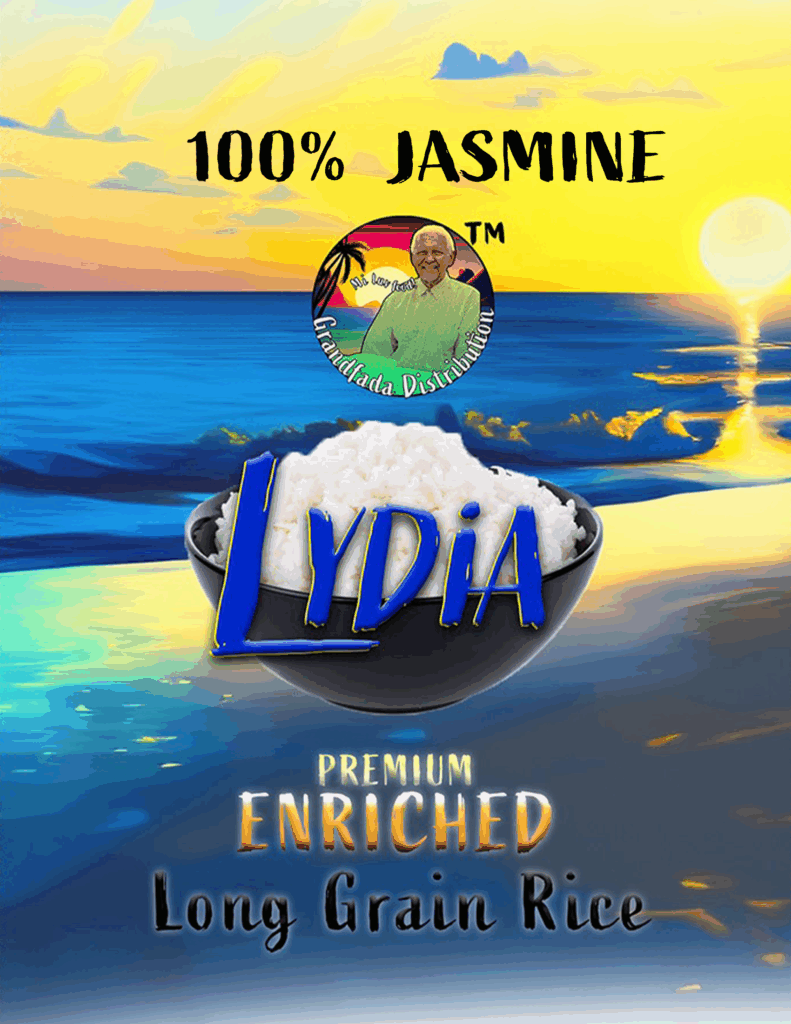Lydia Rice Expands in Jamaica: A New Chapter for Culinary Tourism
In a bold and timely move, Lydia Rice is scaling its presence across Jamaica’s hospitality and retail sectors — and Grandfada is here to shine a spotlight on what this means for our food culture, economy, and the future of culinary tourism in the island. Travel and Tour World
The Expansion: What’s Happening
- Lydia Rice, already known for its premium jasmine and long-grain varieties, is now entering hotels, resorts, and homes across Jamaica, aiming to become a household and hospitality staple. EIN News+1
- In doing so, the brand is positioning itself not merely as a commodity, but as part of a story one that elevates Jamaican cuisine and culinary identity. Travel and Tour World
- Notably, the distribution is being handled in partnership with Grandfada Distribution a local logistics and distribution arm whose network and local knowledge can help propel Lydia Rice deeper into Jamaican markets. X (formerly Twitter)
This is more than simply making more product available — it’s crafting visibility for rice as a premium, culturally relevant ingredient, woven into the narrative of Jamaican food.
Why It Matters: Impacts on Culinary Identity & Tourism
Here’s why this expansion is significant — and why Grandfada should celebrate and leverage it:
1. Strengthening Local Culinary Branding
When a staple like rice is treated as premium, it sends a message: our food culture matters. It raises standards across suppliers, kitchen operators, and consumers. Over time, this repositioning nudges the entire culinary ecosystem to think more deliberately about quality, provenance, and storytelling.
2. Enhancing the Tourist Experience
Tourists come for the beaches — but many stay (or return) for the food. As Lydia Rice becomes more visible in hotels and resorts, visitors will taste Jamaican rice in signature dishes, enjoy consistency in quality, and maybe even become curious about its origin stories. This ties directly into culinary tourism — where food is not just sustenance, but an attraction.
3. Empowering the Local Value Chain
To support this expansion, supply chains must respond: milling, packaging, logistics, marketing. This offers local producers, farmers, packaging firms, and distributors opportunity to integrate and scale. With Grandfada in distribution, that local element is central, not peripheral.
4. Setting Standards and Innovation
As expectations rise, operators may lean more into using high-grade ingredients, developing signature rice-based dishes, experimenting with local grains or blends, and leveraging rice in unexpected ways (desserts, rice-based terraces, fusion offerings). Over time, this could spark innovation in Jamaican gastronomy.
Challenges to Watch
Of course, expansion at this scale doesn’t come without hurdles:
- Supply Consistency & Quality Control: Ensuring the same level of rice quality across the island is logistically demanding.
- Pricing & Affordability: Premium positioning may conflict with local consumers’ price sensitivity.
- Competition & Local Brands: Lydia Rice must navigate existing loyalties and perceptions toward “local rice.”
- Education & Marketing: The public (especially outside of tourist zones) needs to see the difference and value in the upgraded product.
What Grandfada Can Do (and Amplify)
Because Grandfada is directly connected to distribution, there’s a unique role you can play — both as partner and narrator:
- Tell the Story
Use your channels — social, newsletters, client touchpoints to narrate Lydia Rice’s journey. From the paddies to the plate. Let people see the faces behind the product: the farmers, the millers, the packagers. - Showcase in Partnerships
Work with hotels, resorts, restaurants to co-brand dishes with “Lydia Rice” e.g., “Lydia Jasmine Jollof,” “Kingston Style Stew Rice (Lydia)” or “Lydia Sticky Rice Pudding.” Make it a badge of quality. - Consumer Education Campaigns
Host rice-tasting events, cooking demos, recipe challenges invite everyday Jamaicans to taste the difference. Educate people on grading, aroma, texture, and best cooking methods. - Support Local Farmers
As demand increases, seek to integrate smallholder rice farmers into supply chains. Provide training, inputs, or aggregation through cooperatives to ensure quality upstream. - Monitor & Adapt
Track uptake, feedback, bottlenecks — and be agile. If certain resorts or parishes struggle with delivery or storage, adapt routes or warehousing. Be the boots on ground for continuous optimization.
A Vision: Rice as a Jamaican Culinary Emblem
Imagine a future where:
- Visitors arriving at Dunn’s River Falls get a welcome plate of rice cooked with local seasonings, branded “Welcome cooked with Lydia Rice.”
- Restaurants across Montego Bay and Port Antonio stage “Rice Nights” where chefs compete using Lydia Rice in local & fusion recipes.
- Rural rice-growing regions become cultural tourism stops: visitors tour paddies, learn planting/harvesting, and cook small batches of rice dishes there.
In many global food destinations, a single ingredient can become emblematic think of how olive oil is tied to Tuscany, wine to Bordeaux, or cacao to Ghana. Lydia Rice’s expansion gives us the opening to elevate rice as part of Jamaica’s gastronomic identity.



